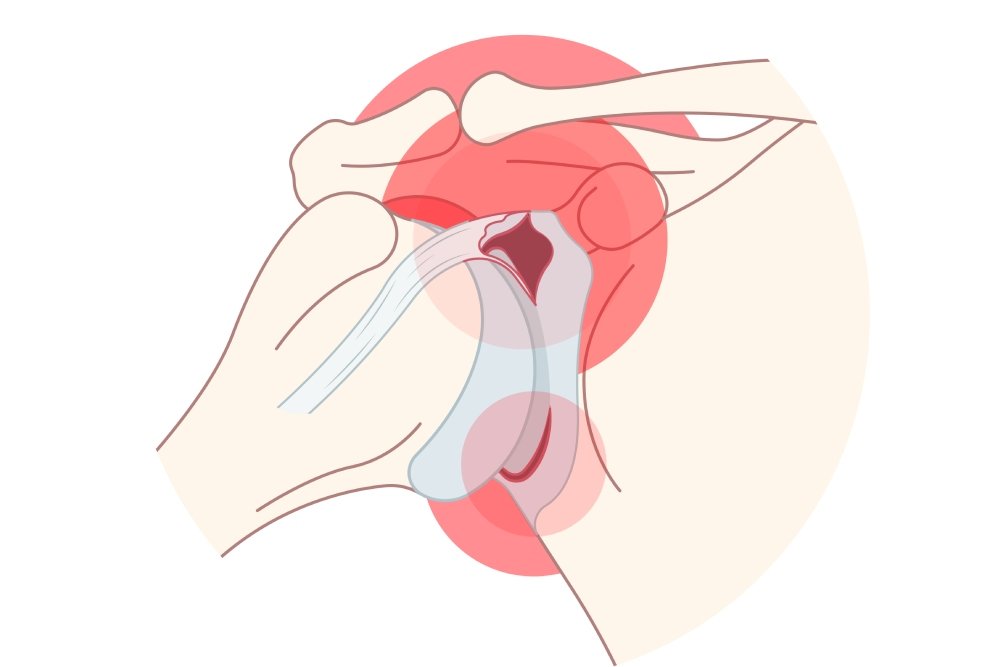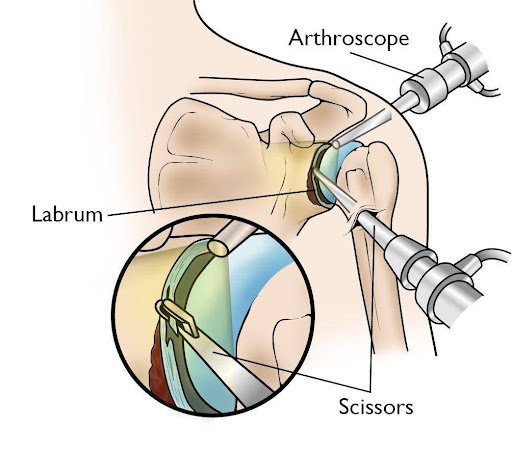
How Do You Diagnose a Superior Labrum Anterior and Posterior (SLAP) Tear?
The S in SLAP refers to the top of your labrum which is the cup-shaped rim of cartilage that lines and reinforces the ball-and-socket joint of the shoulder. A SLAP tear occurs at the top of the labrum, both at the front (anterior) and back (posterior) of the attachment point of the biceps tendon. A detailed patient history, physical examination and imaging studies such as an MR arthrogram are used to diagnose a SLAP tear which can be classified into 4 categories:
- Type1: The Labrum shows signs of fraying but still functions. Type 1 tears are commonly seen in older and middle aged individuals.
- Type2: In this most common SLAP tear, the Labrum and Bicep Tendon are Torn from the Shoulder Socket.
- Type 3: Torn Labrum tissue is Caught in the Shoulder Joint
- Type 4: Tear of Labrum extends to Biceps Tendon Tear
What Are Common Symptoms of a SLAP Tear?
- Persistent Dull Pain or Sharp Pain Deep in the Shoulder
- Shoulder Pain in Certain Positions Like Raising your Arm or Stretching Your Arm Behind Your Head
- Shoulder Pain with Certain Activities like Reaching Overhead or Throwing a Ball
- Sensation of Popping, Locking, Catching or Grinding when you Move Your Shoulder
- Feeling that Shoulder is going to Pop Out of the Joint
What Are Common Causes of a SLAP Tear?
Chronic injury is the most common cause of a SLAP tear.
- SLAP tears can happen over time in people who play sports or do exercise that requires repetitive overhead motion.
- SLAP tears are also seen in people age 40 or older, from chronic wear and tear of the shoulder over time.
- Acute SLAP tears occur after a motor vehicle accident, a fall from an outstretched arm or shoulder dislocation.
What are the Treatment options for SLAP Tears?
The treatment of a SLAP tear primarily depends on the severity of the injury, the patient's age, activity level, and overall health.
Conservative treatment is usually the first line of management, especially for less severe tears or older patients with lower activity demands. This includes rest, anti-inflammatory medication, cortisone injection and physical therapy to improve shoulder strength, flexibility, and function over time.

Arthroscopic surgery is the most common surgical procedure used to treat a SLAP injury and is considered for severe SLAP tears or if conservative measures have failed. During arthroscopy, your surgeon inserts a small camera, called an arthroscope, into your shoulder joint. This camera displays images on a video monitor which your surgeon uses to guide miniature surgical instruments. Your surgeon will decide the best surgical treatment option for you during the procedure, based on the type of tear you have, as well as your age, activity level, and the presence of any other injuries identified during your surgery.
After the surgery, your shoulder remains in a sling, while the repaired structures heal. After the initial pain and healing, your surgeon will prescribe an individualized physical therapy program to improve your flexibility and range of motion initially and gradually add strengthening exercises for your rotator cuff muscles and shoulder joint.
If you are experiencing persistent shoulder pain, reach out to Dr Ram Aribindi M.D., Board Certified Orthopedic Surgeon at Southland Orthopaedics Ltd, for a comprehensive orthopedic evaluation and an individualized treatment plan of care, targeted to treat your Shoulder Pain.
Remember, pain is your body's way of signaling that something is wrong - don't ignore it!

Please click here to schedule an appointment or call us at (708) 283-2600 to inquire further.

